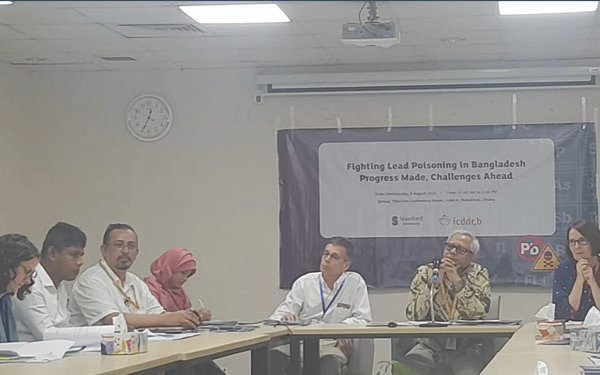
Immediate action is urgently needed to shut down or control industrial sites in Dhaka that are leaking toxic lead, as they are putting thousands of children at serious health risk.
A new study led by the International Centre for Diarrhoeal Disease Research, Bangladesh (Icddr,b) has revealed alarmingly high levels of lead in children’s blood, raising fresh concerns about industrial pollution in the capital’s densely populated neighborhoods.
Icddr,b organized a discussion titled ‘Fighting Lead Poisoning in Bangladesh - Progress Made, Challenges Ahead’ to highlight the widespread and preventable burden of lead exposure in Bangladesh and explore opportunities for urgent intervention.
Dr Tahmeed Ahmed, Executive Director of icddr,b said, "Lead poisoning silently steals our children's potential, damaging their brain development and nutritional status, with consequences that will hold back Bangladesh's future. We must act decisively to eliminate these sources of exposure so that every child can grow up healthy, smart, and ready to contribute to our nation."
The event began with an overview of Icddr,b's lead prevention efforts by Dr Sarah Salway, Senior Director, Health Systems and Population Studies Division (HSPSD).
She underscored how lead exposure remains a major but overlooked public health threat in Bangladesh, particularly for children living near polluting industries.
According to Unicef, Bangladesh is now the 4th most lead-impacted country globally, with 36 million children suffering from elevated blood lead levels [1] Research presented at the event revealed that in Dhaka slums from 2009-2012, 87% of children under 2 had blood lead levels >50 µg/L, strongly associated with stunting [2].



